Maltese vs Maltipoo – which one’s better? If you’re trying to decide between the simply stunning Maltese and sweet, sunny Maltipoo, you’ve got your work cut out! Little pups bursting with character, both types have just so much to offer the right owners and will make an excellent new addition to your pack.
As Maltipoos share DNA with Maltese, there is a fair bit of overlap between the two. However, the Poodle parent brings a little more to the mix than just their trademark curly coat (which isn’t always a given anyhow). Here we’ll take a look at all the things that make Maltese and Malitpoos both super similar and definitely distinct to make your decision just a little bit easier.
Table of Contents
- All About Maltese
- All About Maltipoos
- Maltese vs Maltipoo: Size
- Maltese vs Maltipoo: Temperament
- Maltipoo vs Maltese: Appearance
- Maltese vs Maltipoo: Grooming & Maintenance
- Maltipoo vs Maltese: Health & Wellness
- Maltipoo vs Maltese: Lifespan
- Maltese vs Maltipoo: Training & Environment
- Maltese vs Maltipoo: Cost
- Maltese vs Maltipoo: Family Friendliness
- Maltese vs Maltipoo: Which is the Puppy for You?
Learn How to Care for Your Doodle Puppy!

Perfect for first-time Doodle parents, get ALL your questions answered, including questions new Doodle parents don’t even think to ask.
Plus, get $700 worth of Bonus Materials for FREE, including:- Doodle Parenthood Community and Support Group ($190 value)
- Doodle Puppy Growth Tracker ($20 value)
- EMERGENCY Cheatsheet: When To Call The Vet Immediately ($50 value)
- HELP! Button ($145 value)
- And SO MUCH MORE!
All About Maltese
An ancient breed dating back thousands of years, the Maltese were created as much for their rat hunting skills as their qualities as a canine companion. Due to this working dog background, these hounds aren’t quite lapdogs, although they do love plenty of attention. Maltese are pedigree pups, and that, coupled with the fact that they have been around so long, means there are fairly reliable breed standards for them in terms of both appearance and temperament, so you can be reasonably sure what you’re going to end up with.
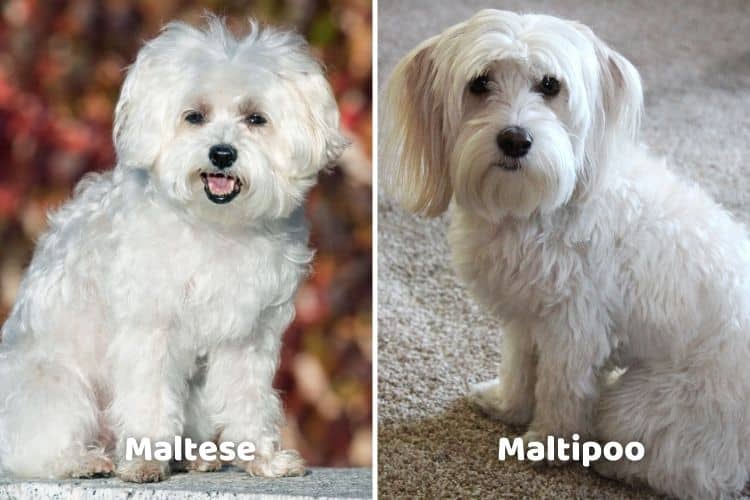
All About Maltipoos
Maltipoos, on the other hand, are a very recent addition to the world of dogs. Springing up in the thick of the Doodle craze, they are a bit of a surprise because the Maltese is a breed that doesn’t need making more hypoallergenic – they are relatively low-shed in their own right. As a mixed breed, Maltipoos are a bit more of an unknown quantity. Even puppies from the same litter can differ quite a lot in terms of how they look and act. The generation of the dog and the genes they inherit both have much to do with this.
Maltese vs Maltipoo: Size
Maltipoos can be bred with either Toy or Miniature Poodles – never Standard because of the Maltese’s tiny size. This allows for two distinct types of Maltipoo: the Toy and the Mini. Both are larger than the Maltese, which is classified as a toy breed. Maltipoos fit somewhere between the toy and small categories. You can see the differences below:
| Maltese | Maltipoo | |
| Toy | N/A | Weight: 5-15 pounds Height: 6-11 inches |
| Mini | N/A | Weight: 15-25 pounds Height: 11-14 inches |
| Standard | Weight: 4-8 pounds Height: 7-12 inches | N/A |
Be extremely wary of breeders offering Teacup versions of either of these dogs (it happens a lot). While they are undoubtedly gorgeous, they tend to be bred from litter runts. These dogs often have an array of health issues that account for their smaller size. Many of these can be genetic and passed onto their offspring.
Maltese vs Maltipoo: Temperament
Both the Maltese and Maltipoo happily fit into the ‘little dogs with big personalities’ stereotype, although those personalities can differ somewhat. Generally speaking, Maltipoos, much like their other Doodle cousins, are super friendly, while the Maltese tend to be a bit more reserved. In fact, without the right kind of early socialization, they can suffer from small-dog syndrome, acting too big for their boots around larger dogs. This can even go so far as to result into aggressive acts.
The upside of the Maltese’s slightly less sociable nature means they are much more independent. In this way, they are less prone to separation anxiety which plagues the more people-oriented Doodles. In Maltipoos, this hatred of being left alone for long periods is not helped by the fact they do tend to inherit those famed Poodle smarts. They get bored more easily than other breeds. This can lead to the onset of a whole host of unwelcome behaviors like barking and chewing.
When considering adopting a dog, you need to think about how much you and your family will be away from the house. This will play into your decision about which type to go for. That being said, leaving any pup alone for extended periods is not advisable. It’s always better if there’s a person or, at the very least, another pet for them to hang with. For the times when leaving your dog is unavoidable, it’s best if you can provide some toys to keep them entertained while you’re gone.
Maltipoo vs Maltese: Appearance
Shared genes do mean that sometimes Maltipoos and Maltese can look alike. They tend to have a similar build, body shape, and even face and muzzle size. A Maltipoo with more Poodle genes might be a little more athletic, but the difference isn’t so much. Obviously, there is a size distinction (as covered above), but again this isn’t so significant, especially with the Toy Maltipoo. Both breeds are cute as a button from puppyhood and beyond.
That said, it’s often easy to distinguish between the two dogs simply from their coat color (and type). While the Maltipoo picks up a few hues from their Poodle parent (everything from grey to red, to brown and black), they could even end up with two or three colors in their coat, the pedigree Maltese is only found in various shades of white.
Maltese vs Maltipoo: Grooming & Maintenance
The Maltese coat really is its crowning glory and the reason that many are drawn to these scrumptious pups. They are considered a drop-coated breed meaning that they have a smooth, silky, and straight hair coat that, when left unchecked, falls right down to the ground. While this coat looks very appealing, it’s important to note that maintaining it can be a lot of work – especially given its color too. Daily brushing and frequent washing will be needed to keep it in top shape, even if you do prefer to keep it short.
Alternatively, the Poodle coat is known for its smooth or coarse curly appearance. Also, a hair coat (meaning a very low-shed potential) can grow and grow. That’s why regular trims are also crucial for these dogs. Plus, daily brushing too to ensure knots don’t develop into tangles and then progress into matting. That being said, it’s not a given your Maltipoo will end up with a curly coat, even if they have a higher percentage of Poodle genes than Maltese.
Often Maltipoos inherit a coat that sits somewhere between the two extremes. It tends to be quite a bit more ‘textured,’ shall we say, than the Maltese coat, but not quite as curly-tight as the Poodle one. The great news for owners of pups with these coats is that there is far less work needed to care for them than either of the others. You will likely only need to brush them two or three times a week, although regular washing and hair trims will still be necessary.
Owners of light-coated breeds tend to be a little keener to bathe them frequently, but this could actually cause problems for your pet’s skin and coat. Around once a month is all that’s really needed. Opt for an ultra-nourishing shampoo (and conditioner, too) to keep their hair healthy. You will also need to tackle other grooming tasks such as nail trims, teeth brushing, ear cleaning, and removing tear stains.
Maltipoo vs Maltese: Health & Wellness
Both Maltese and Maltipoos are considered pretty healthy pups. However, Maltipoos, with their more diverse DNA, might just have the edge here in terms of avoiding heritable conditions. They are, however, not completely immune from them. Some issues to watch out for with both breeds are:
- Luxating Patella – this is where an issue with the development of the knee bones enables the kneecap to slide out of place.
- Progressive Retinal Atrophy (PRA) – this is a degenerative disease of the eyes that can eventually lead to blindness.
- Collapsed Trachea – this is a progressive respiratory condition that occurs when the rings keeping the windpipe open fail.
- Dental Issues – tooth and gum issues are common in smaller breeds of dogs due to overcrowding of the mouth which means plaque builds up quickly.
- Allergies and Sensitivities – more often seen in Poodle lines, gastrointestinal and skin issues can be caused by the body disliking various ingredients.
As toy-to-small dogs, both the Maltese and Maltipoo are at risk of obesity which can cause or exacerbate a range of health disorders, especially related to the heart. Take care that as much as they try to communicate their utter starvation with their gorgeous chocolate eyes, you don’t give in and feed them more than the food manufacturer’s recommendations.
Maltipoo vs Maltese: Lifespan
Maltipoos and Maltese do pretty well in the lifespan stakes, averaging around 12 to 15 years, more with the proper care and attention. They owe this good fortune to the fact that smaller dogs tend to outlive larger ones. With this in mind, you might expect your Maltese to outlast your Maltipoo by just a little bit as they are marginally smaller. However, the difference isn’t likely to be too significant.
Maltese vs Maltipoo: Training & Environment
When it comes to training, Maltipoos, with their clever Poodle genes, will likely do better with anything over and above the canine basics. This is especially the case because Maltese lean a little towards stubbornness. This can mean they’re not always inclined to do everything (or indeed anything) that their owner asks of them. That being said, there’s nothing to say the Maltipoo won’t inherit a little of this stubbornness too.
With exercise, the Maltese’s working dog background might make them a little more energetic than your average lapdog. All Doodles are pretty active too. A couple of walks a day are necessary for giving your pup a change of scenery for doing their business. Both dogs can likely work through a fair amount of their exercise needs inside or by lolloping about the garden chasing toys, playing with kids, etc.
Maltese vs Maltipoo: Cost
Neither of these dogs comes particularly cheap unless you’re lucky enough to find one at the local pound. The Maltese, as a pedigree, might be slightly higher at $1,000-$2,500 than the hybrid Maltipoo at $500-$2000.
Be wary of any breeders offering either of these dogs at much lower prices than these. Scammers and puppy mills are as much a problem for Doodle dogs as for purebred ones these days. You might end up with a very sick puppy or no puppy at all after making a hefty down payment.
You’ll also want to factor in the ongoing costs of caring for one of these dogs. You’ll obviously save money on food, given that they consume far less than larger breeds. Accessories for smaller pups tend to be a little cheaper too. However, you could end up spending a lot more at the groomers keeping that coat in check unless you decide to take on trimming and the various other tasks at home. Then you’ll have to think about vet costs and training… but in terms of Maltese vs Maltipoo, there won’t be much real difference here.
Maltese vs Maltipoo: Family Friendliness
Both the Maltese and Maltipoo can do well in the right kind of family setup, as long as they have been well socialized and thoroughly trained. The Maltese, as the smaller dog, can be a little more anxious, which could result in snappish behavior if they feel threatened. For this reason, these dogs are probably not well suited to a household with particularly young children who could scare or accidentally hurt them.
Maltipoos, if they inherit the Poodle personality, will have much more energy and be far more willing to play with younger and older children alike. But again, they will need to be closely supervised to ensure no accidents happen. Before adopting a dog into your family home, it’s always a good idea to help your kids understand how best to interact with this newest family member.
Maltese vs Maltipoo: Which is the Puppy for You?
By now, you’ve probably got at least halfway towards figuring out which of these two cute canines might suit your situation the best. As a quick reminder, these are the fundamentals:
Opt for a Maltese if you:
- Want a smaller, toy-sized dog
- Are away from the house a little more
- Have plenty of time to care for their coat
- Like to be entirely sure what you’re getting
Choose a Maltipoo if you:
- Are okay with a slightly larger dog
- You or your family spend a lot of time at home
- Are looking for a less high-maintenance dog
- Don’t mind a little uncertainty
Taking home a new puppy is one of life’s great joys, but getting there can be tricky, especially when you’re not sure which is the best breed for you. Choosing based on looks alone is a recipe for disaster. That’s why we have created this thorough comparison of these two dogs. We hope the information here helps you make the best choice for you and your family.

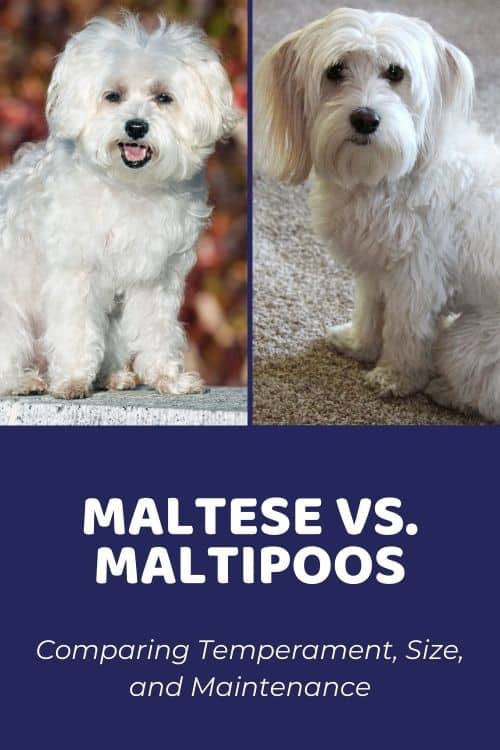

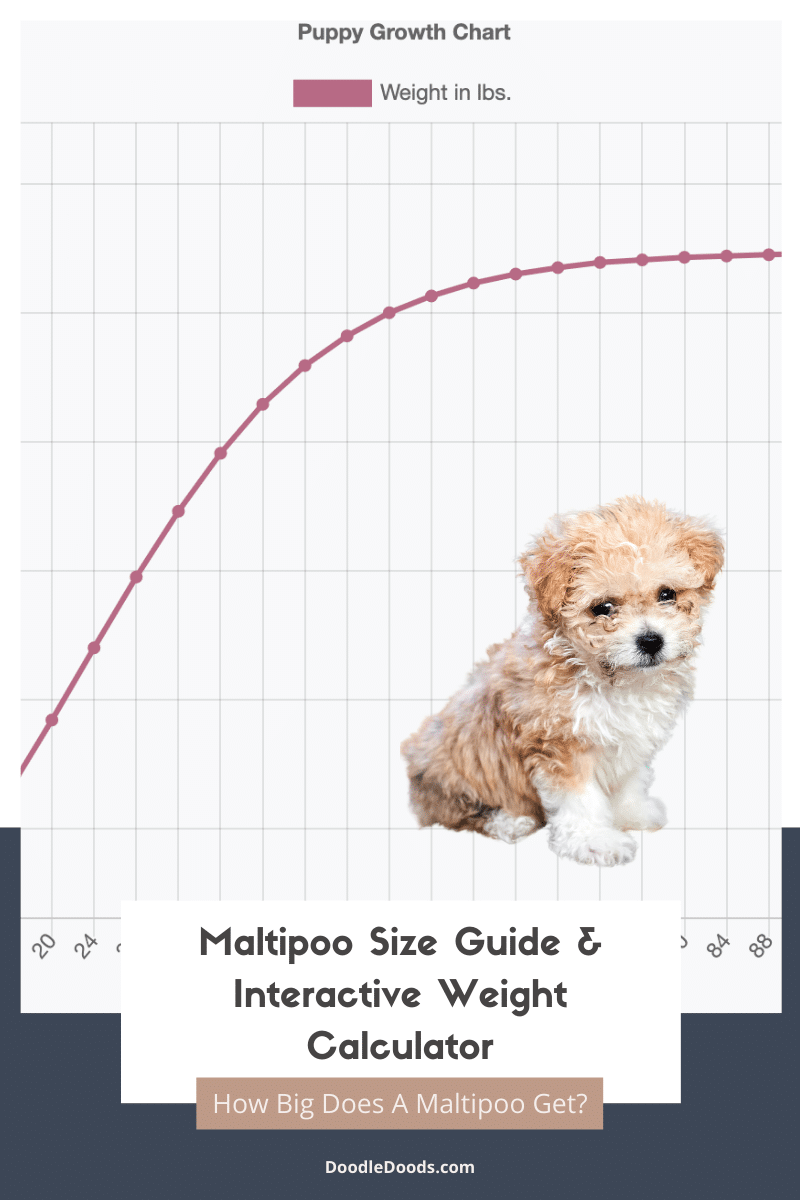

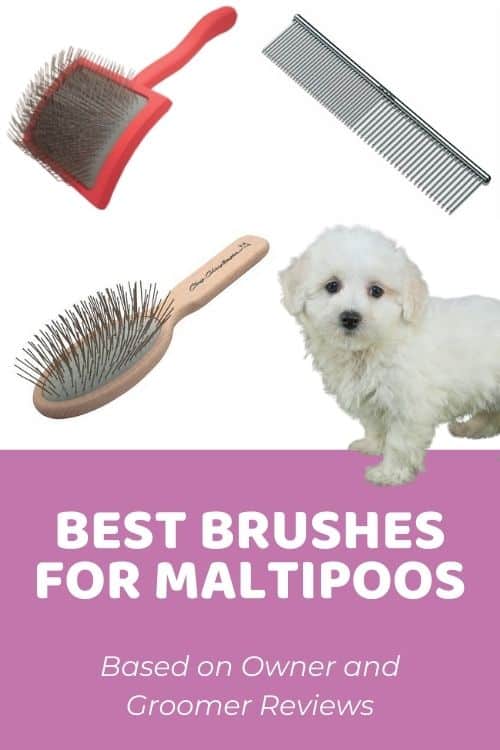
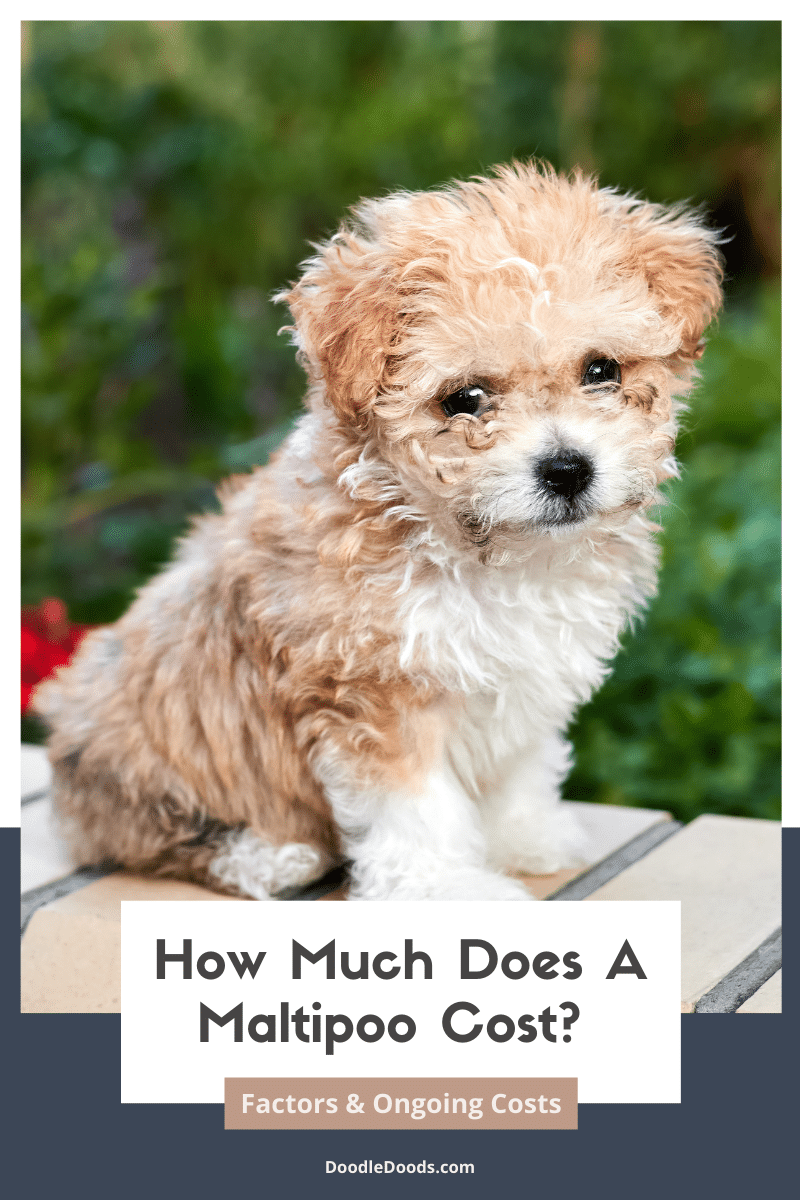
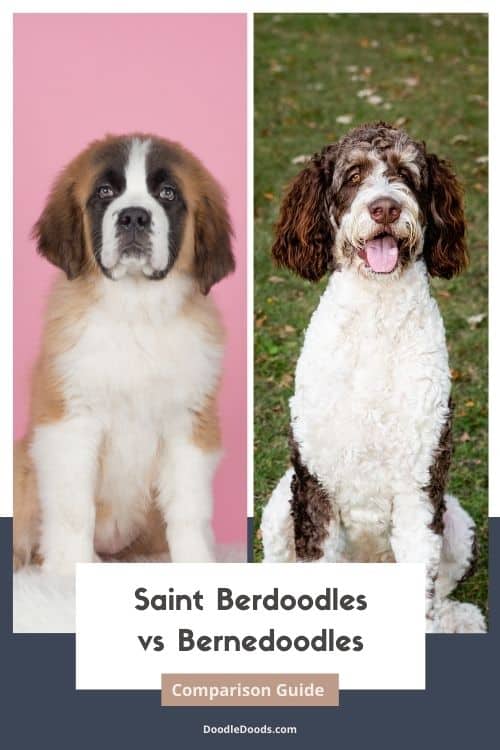


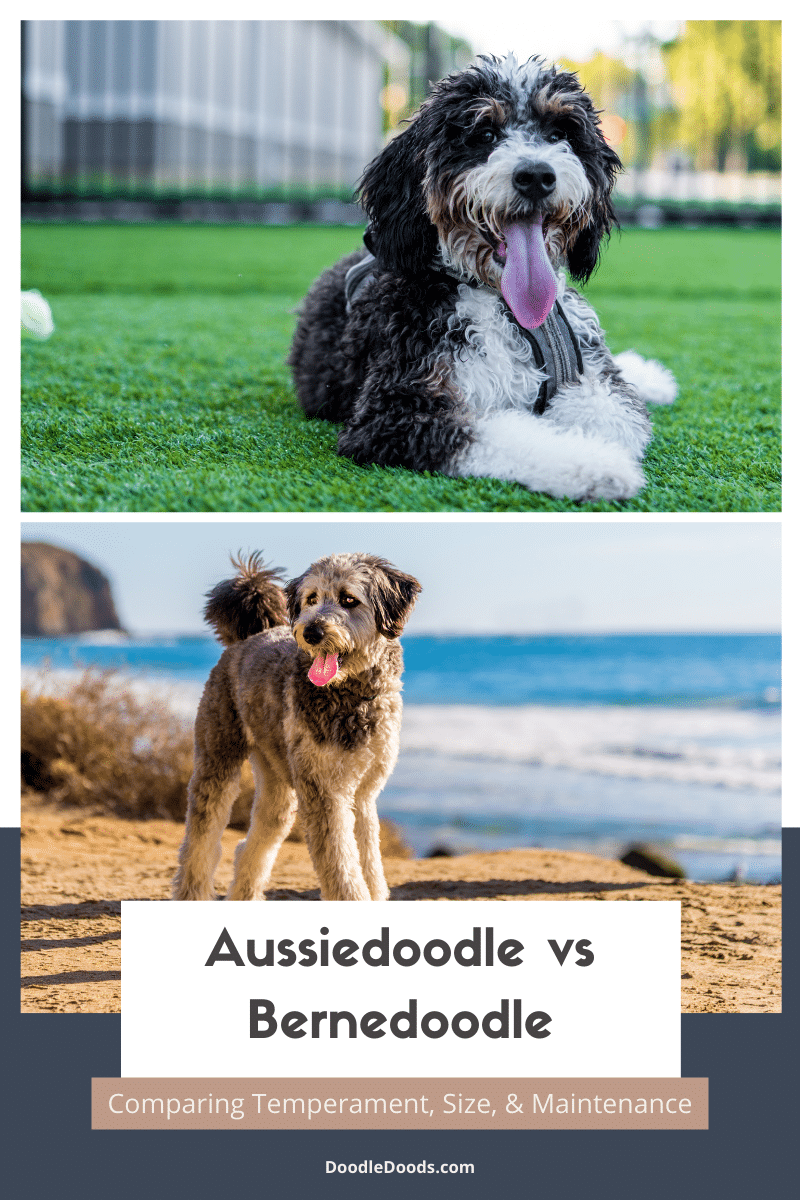


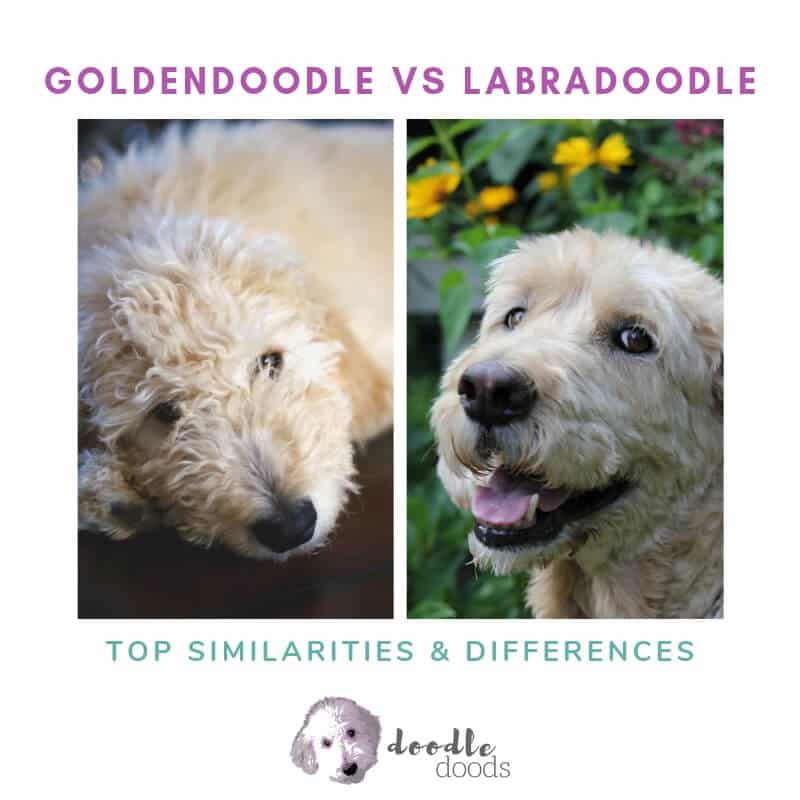

We have had several dogs.over the years. We lost our last puppy-dog for 22 years it had puddle and bashan weight 18 ti 22 lbs and both me and my wife are nin our mid seventies and live in Michigan in the summer, and Florida in the winter.
August 13, 2023 at 12:45 pm